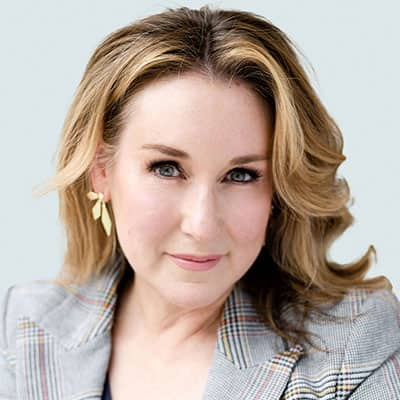Raising the wealth management bar for Gen X women
There are fundamental similarities in how all types of investors approach their financial lives—but women often take different life journeys. And the financial circumstances and decisions they face along the way can impact their investing goals, their investment decision making, and even the perceived value of financial advice itself.
A gender wealth gap—and an advisory gap
The wage-to-wealth gap between women and men has been widely documented. But did you know that a 10% gender pay gap can lead to a whopping 40% gender wealth gap?1
It’s no wonder, then, that women may feel less optimistic about meeting their financial goals.2 And because they often face added challenges—like career interruptions to raise a family, lower lifetime earnings (and as a result, less money to invest), and a potentially longer life span—as a group they enter retirement with just 74% of the wealth accumulated by men, according to a global wealth equity study.3
Women manage assets but are underserved by financial advisors
That said, women investors play a significant role in the world of finance, presently managing over $10T in total US household financial assets. And projections indicate that this figure will skyrocket by 2030, a combination of enhanced income earning power and the likelihood that they’ll inherit much of the $30T in assets that baby boomers currently possess.4
In addition, 42% of Gen X women and 49% of millennial women report that they are the sole financial and investment decision-maker for their household.5
Despite these remarkable strides in economic power, and with so much money to influence, Gen X women feel vastly underserved.
Figure 1: US Gen X women investors are less satisfied with financial advice than other generations
| Millennial women (%) | Gen X women (%) | Boomer women (%) | |
|---|---|---|---|
| I currently work with a financial advisor | 45 | 53 | 53 |
| I’m extremely confident in my financial advisor’s advice | 53 | 45 | 60 |
| I’m extremely satisfied with the value I receive from my advisor in exchange for the fees I pay | 38 | 32 | 52 |
Source: State Street Investment Management, 2024 Influential Investor Segment Study. Data collected in September 2023.
Generation X women: Empowered—and exhausted
Born between 1965 and 1980, the Gen X cohort overall was raised to believe that women could do anything. They could have it all. Many Gen X women were often the first in their families to go to college, to live on their own, launch a career, or opt to stay home to raise their children. In an effort to have it all, they paved the way for concepts like work/life balance. But they also report high levels of work/family interference—and are exhausted by it.
Perhaps their exhaustion is a symptom of the stress it takes to balance a long list of competing financial demands and goals in the midst of their peak earning years.
For example, in 2024, the first wave of Generation X, those born in 1965, will reach a significant milestone: turning 60 years old. And that milestone brings a myriad of financial challenges into focus: ensuring they’re saving enough to feel secure in retirement, having funds to travel, maintaining their current standard of living, and taking care of both children and senior parents.
Figure 2: Gen X women’s top 10 financial goals
| Financial goal | % of respondents who agreed |
|---|---|
| Having enough savings to last through my retirement years | 83 |
| Having funds to travel | 62 |
| Maintaining my current lifestyle when I retire | 62 |
| Having money for my future healthcare needs | 57 |
| Being able to choose when I retire | 51 |
| Building up an “emergency savings” account | 31 |
| Keeping up with current expenses | 28 |
| Being able to take care of family members | 25 |
| Paying off existing mortgage | 25 |
| Leaving estate for heir(s) and/or protecting estate from estate taxes | 22 |
Source: State Street Investment Management, 2024 Influential Investor Segment Study. Data collected in September 2023. Question: Below is a list of financial goals. Please select your top five financial goals.
Even so, Gen X women are resilient in their ambition to move forward financially.
Gen X women: An advisory opportunity
The 47% of Gen X women who do not currently work with an advisor present a clear and compelling growth opportunity. Research suggests wealth management firms that can attract, grow, and retain high-growth clients segments—including Gen X and millennial women—could see up to four times faster revenue growth.6
The data is positive for women investors, too. Survey results show that having a financial advisor, versus self-directed investing, has a significantly positive impact on a woman’s financial optimism and portfolio satisfaction (Figure 3).
Uncovering the full potential of this client segment
An increased focus on Gen X women could prove to be a wealth of opportunity for advisors—bringing significant monetary impacts, longer-lasting relationships, and an improvement in a practice’s bottom line performance. Why do I say this?
According to our findings, women tend to be more loyal to financial advisors than male investors (Figure 4)—and are more likely to refer their friends and family (Figure 5).
The bottom line is this…
Underserved Gen X women investors present advisors with opportunity—the potential to grow their business while playing a vital role in helping to close the gender wealth gap. If you ask me, that sounds like a win-win for advisors and Gen X women investors alike.
Learn more about the business development considerations that may help your firm devise a client segmentation strategy to better serve women investors—explore our practice management insights.

